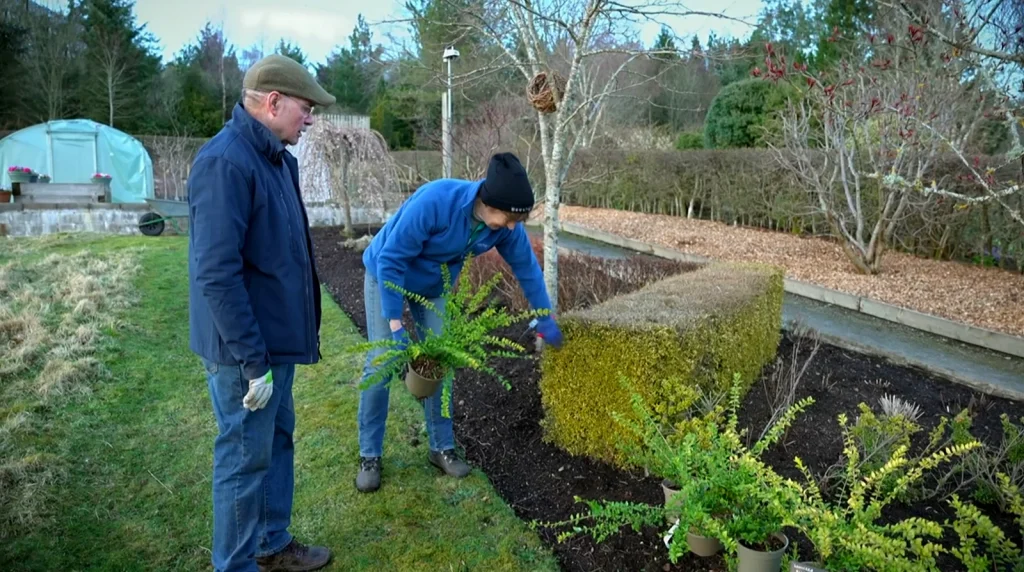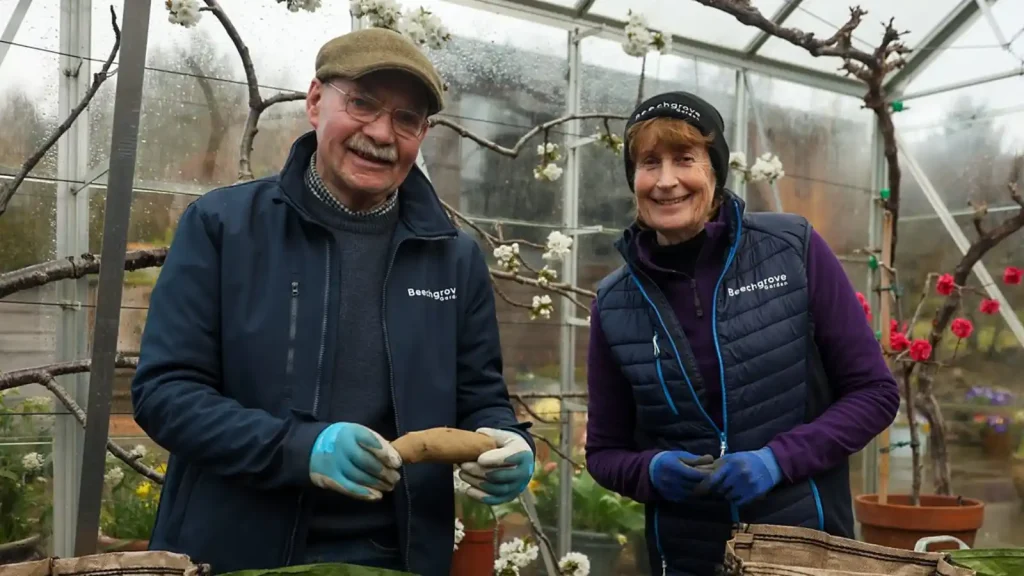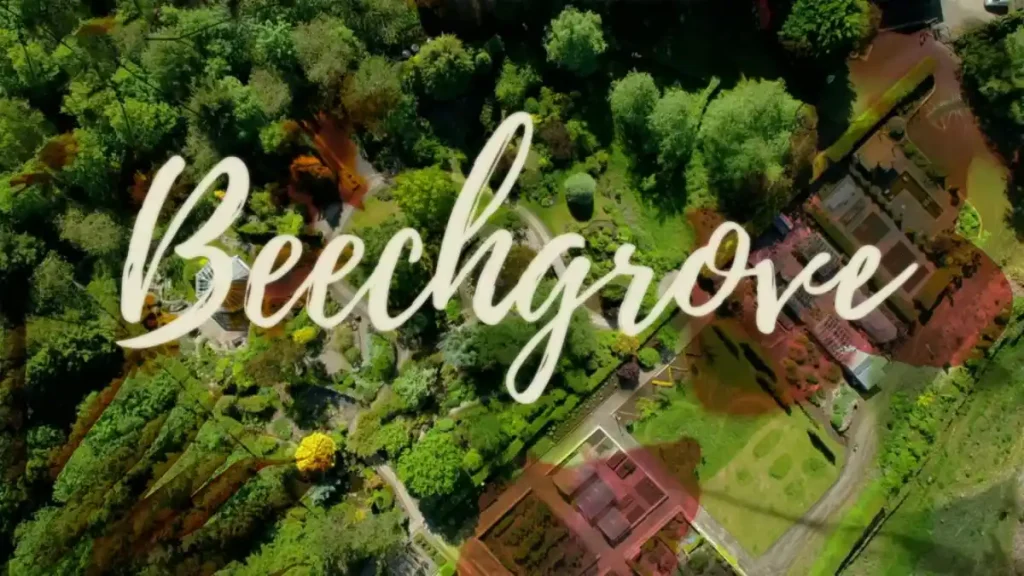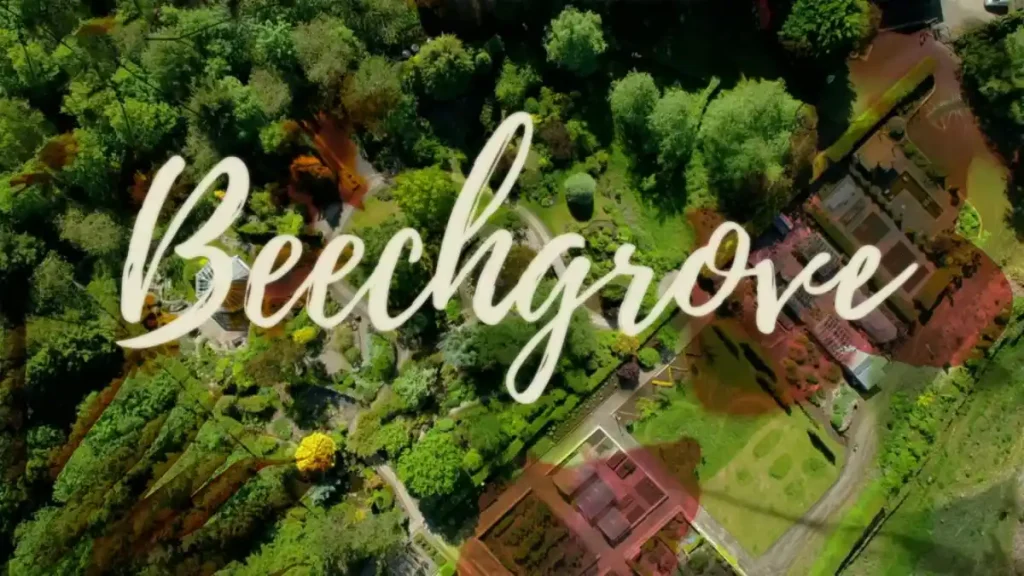The Beechgrove Garden 2024 episode 1 – As winter’s chill thaws and gives way to the vibrant renewal of spring, our gardens awaken from their slumber, heralding the much-anticipated return of “The Beechgrove Garden” series. This delightful transition into a new season brings with it an array of opportunities and challenges for gardeners, and the Beechgrove team is poised to guide you through every step. From the first whispers of spring through the bountiful days of summer and into the crispness of autumn, our experts will share their wealth of knowledge, offering timely advice and insightful tips tailored to help your garden thrive.
This year, as we embark on another gardening journey, Carole Baxter and George Anderson lead the charge at Beechgrove. They’ll delve into the aftermath of the season’s wild, wet winter, examining its impact on the garden’s vitality and resilience. This episode promises to be a treasure trove of information, especially for those just dipping their toes into the gardening world. A special segment, “Back to Basics,” is dedicated to novices, offering a curated list of essential gardening tools designed to empower beginners with the confidence to start their gardening adventure.
Moreover, our seasoned experts, George and Carole, will demonstrate the art of relocating Beechgrove’s cherished rhubarb, sharing their insights on how to ensure a successful transplant. In another highlight, Brian Cunningham turns his attention to the fundamentals of greenhouse gardening, laying down the groundwork for what promises to be a series of enlightening tutorials. From navigating the complexities of greenhouse cultivation to offering weekly nuggets of gardening wisdom, Brian’s guidance is sure to inspire both seasoned gardeners and newcomers alike.
But that’s not all. This episode also features a captivating visit to an allotment in Dundee, providing a glimpse into the community spirit and passion that drive local gardening enthusiasts. It’s an opportunity to learn from the experiences of fellow gardeners, discovering new techniques and ideas that can be adapted to your own gardening endeavors.
As we stand on the threshold of a new gardening season, “The Beechgrove Garden” invites you to join us in this annual cycle of growth and renewal. With each episode, we aim to equip you with the knowledge and inspiration needed to navigate the gardening year with confidence and creativity. Whether you’re tending to a modest window box, beautifying a balcony, or nurturing an expansive garden with borders and raised beds, our series promises to enrich your gardening experience with practical advice and innovative ideas.
So, as the days grow longer and the earth reawakens, let’s embark on this gardening journey together. Stay tuned to “The Beechgrove Garden” for a season filled with learning, growth, and the joy of gardening. Welcome to “The Beechgrove Garden 2024,” episode 1 – the beginning of an exciting adventure that promises to keep your garden flourishing and your spirit inspired throughout the seasons to come.
The Beechgrove Garden 2024 episode 1
Growing Strawberries: Expert Tips for a Luscious Garden Harvest
Strawberries, with their rich, aromatic flavor that far surpasses anything you’ll find at the supermarket, are a delightful addition to any garden. Whether you’re a seasoned gardener or a novice looking to bring a touch of sweetness to your yard, growing strawberries offers a rewarding experience. This comprehensive guide will provide you with all the information you need to grow, care for, and harvest strawberries, ensuring a bountiful, delicious crop.
Quick Guide to Growing Strawberries
Planting and Location
- When to Plant: Plant strawberries in spring or fall, depending on your growing zone.
- Where to Plant: In-ground gardens, raised beds, and containers are ideal. Ensure your chosen spot receives at least 8 hours of sunlight daily.
- Soil Preparation: Strawberries thrive in slightly acidic soil (pH 5.5 to 6.8). Enrich your native soil with aged compost or use a premium bagged potting mix for containers.
Care and Maintenance
- Watering: Provide 1 to 1.5 inches of water weekly, taking care not to wet the leaves.
- Fertilization: Use a continuous-release fertilizer to encourage fruit production.
- Spacing: Allow room for runners by planting strawberries 18 inches apart.
Harvesting
- When to Harvest: Pick strawberries in the cool of the morning and refrigerate immediately.
- Storing Strawberries: Refrigerate strawberries without washing them first. Wash only just before eating to prevent spoilage.
Understanding the Strawberry Life Cycle
Strawberries are hardy perennials that die back in winter and burst into growth with the warming soil of spring. They produce runners and, depending on the variety, may benefit from having most runners clipped to encourage more fruit production. Proper care through their life cycle ensures a healthy crop of strawberries year after year.
Soil, Planting, and Care
Success with strawberries begins with the right soil conditions and careful planting. Avoid burying the crown of the plant, as this can lead to rot. Mulching with straw or black plastic can help maintain soil moisture and keep the fruit clean. A balanced fertilization regime supports healthy growth and fruiting.
Troubleshooting Common Problems
- Pests: Use bird netting to protect your strawberries from birds. Watch out for slugs, especially in gardens with organic mulches.
- Diseases: Practice good sanitation by removing old leaves and debris to prevent fungal diseases.
- Watering and Weather: Irregular watering or extreme weather can affect fruit size. Consistent care can mitigate these issues.
Growing strawberries in your garden can be a deeply satisfying endeavor, yielding delicious and nutritious fruits that far surpass store-bought varieties in flavor and freshness. By following the expert tips outlined in this guide, gardeners of all levels can enjoy the sweet rewards of their labor. Remember to plant in well-prepared soil, care diligently for your plants, and protect them from pests and disease for a bountiful harvest.
Unlock the Secrets to Growing Onions in Your Garden
Captivate Your Culinary Spirit with Homegrown Onions
Imagine the satisfaction of harvesting your own crisp, flavorful onions right from your backyard. Growing onions is not just a gardening activity; it’s a journey towards self-sufficiency and culinary delight. This guide will illuminate the path to adding homegrown onions to your garden, making your dishes even more delicious and rewarding.
Dive into the World of Onions
Onions are a cornerstone of countless recipes, known for their versatility and ability to elevate any dish. But what makes homegrown onions so special? It’s their unmatched freshness, sweetness, and flavor that store-bought onions can rarely compete with. Whether you’re a novice or a seasoned gardener, the ease and efficiency of growing onions will surprise you.
Why Choose Homegrown?
The journey from planting to plating is straightforward and gratifying. With varieties like Texas Sweet and Walla Walla, you can cultivate onions that suit your taste and climatic conditions. Starting with quality onion slips, such as those from Bonnie Plants®, sets you on the right path. These plants, nurtured by experts for over a century, ensure your garden’s success.
Planting for Perfection
Onions thrive in sunny locations with fertile, well-drained soil. Achieving the perfect balance of soil pH between 6.0 and 6.8 is crucial for optimal growth. For those battling heavy clay or seeking simplicity, raised beds filled with a tailored soil mix offer a foolproof solution. Planting your onions at the right depth and spacing encourages healthy growth and maximizes yield.
Nurturing Your Crop
A steady supply of moisture is essential due to the onion’s shallow root system. Regular watering keeps the soil moist, promoting uninterrupted growth. Feeding your onions with a continuous-release plant food ensures they receive all the necessary nutrients throughout the season. As your onions push towards the surface, forming bulbs, a light mulching can protect them while allowing the sun to do its magic.
Harvesting and Enjoying the Fruits of Your Labor
The moment of harvest is a celebration of your dedication. Whether you enjoy them as spring onions or wait for full-sized bulbs, the choice is yours. The process of curing, followed by proper storage, seals the deal, ensuring you can enjoy your onions for months to come.
Take Action: Start Your Onion Growing Adventure
Embrace the journey of growing onions in your garden. With minimal effort and the right care, you’ll be rewarded with onions that are not just food, but a story of your garden’s success. Let this guide inspire you to plant, nurture, and harvest onions that will be the envy of your neighborhood and the pride of your kitchen.
F.A.Q. on “The Beechgrove Garden 2024 Episode 1”
Q1: What is “The Beechgrove Garden” and what can viewers expect from the 2024 series?
A.: “The Beechgrove Garden” is a beloved gardening series that guides viewers through the gardening year, offering expert advice, tips, and inspiration. In 2024, viewers can expect a series filled with practical advice for gardeners of all levels, from beginners to seasoned experts. The show will cover a range of topics from basic gardening tools for novices to advanced techniques for cultivating specific plants like strawberries and onions.
Q2: Who are the experts featured in the first episode of “The Beechgrove Garden 2024”?
A.: The 2024 season kicks off with gardening veterans Carole Baxter and George Anderson, who will share their insights on recovering from a wet winter and preparing for the upcoming seasons. Brian Cunningham will also feature, offering his expertise on greenhouse gardening.
Q3: What special segments can beginners look forward to in this episode?
A.: Beginners will particularly enjoy the “Back to Basics” segment, which is tailored to help novice gardeners get started on their gardening journey. This segment will include a curated list of essential gardening tools and foundational tips for first-time gardeners.
Q4: How does “The Beechgrove Garden” address seasonal gardening challenges?
A.: Each episode, including the first of the 2024 series, is designed to address the specific challenges and opportunities presented by the current season. The team explores how the season’s weather, such as a wild, wet winter, impacts garden vitality and resilience, offering solutions and preventive measures for a thriving garden.
Q5: Can “The Beechgrove Garden” provide inspiration for gardeners with limited space?
A.: Absolutely. “The Beechgrove Garden” is not just for those with expansive gardens; it also offers innovative ideas for those tending to window boxes, balconies, or small outdoor spaces. The series encourages creativity in gardening, demonstrating how to maximize the potential of any space, no matter the size.
Q6: What practical gardening skills will be covered in the first episode?
A.: The first episode will cover a variety of practical skills, including the proper relocation of plants such as rhubarb, the basics of successful greenhouse gardening, and the essentials of soil preparation and care for both strawberries and onions, aiming to ensure a successful harvest.
Q7: How can viewers apply the advice from “The Beechgrove Garden” to their own gardens?
A.: Viewers are encouraged to adapt the techniques and advice shared on the show to fit their own gardening situations. Whether it’s applying the detailed steps for planting and caring for strawberries and onions or following the expert advice on seasonal garden preparation, the show aims to equip gardeners with knowledge that’s both actionable and adaptable.
“The Beechgrove Garden 2024” promises a season rich in knowledge, growth, and the sheer joy of gardening. Whether you’re just starting out or looking to refine your gardening skills, this series is poised to be your go-to guide for all things gardening, offering a blend of inspiration, practical advice, and the latest gardening trends.




